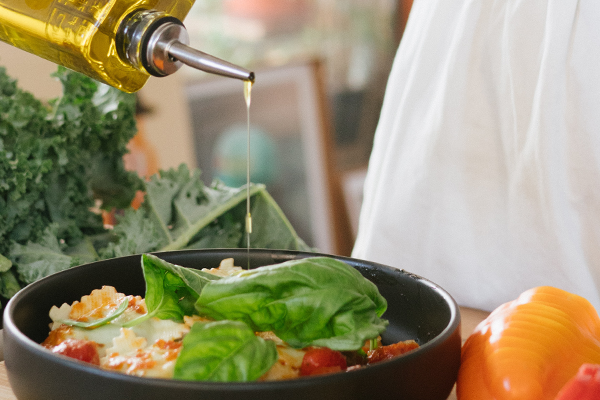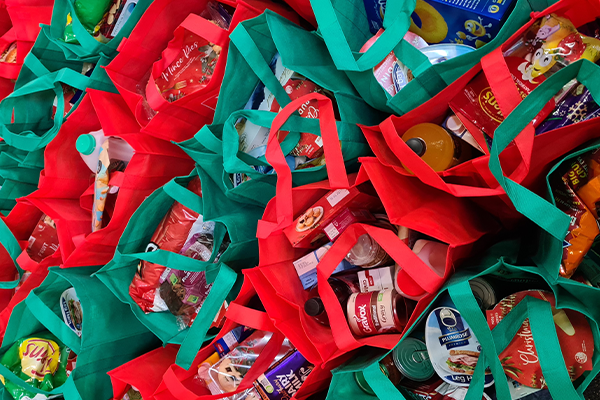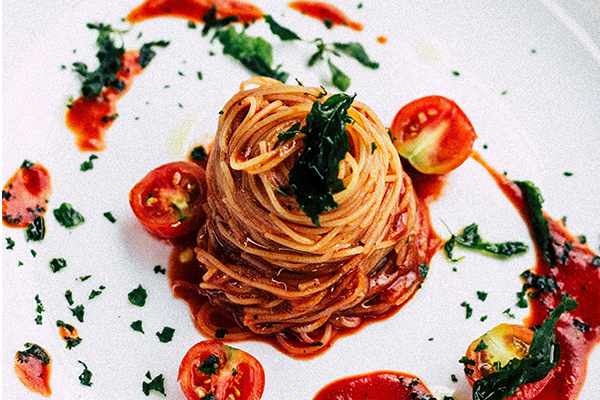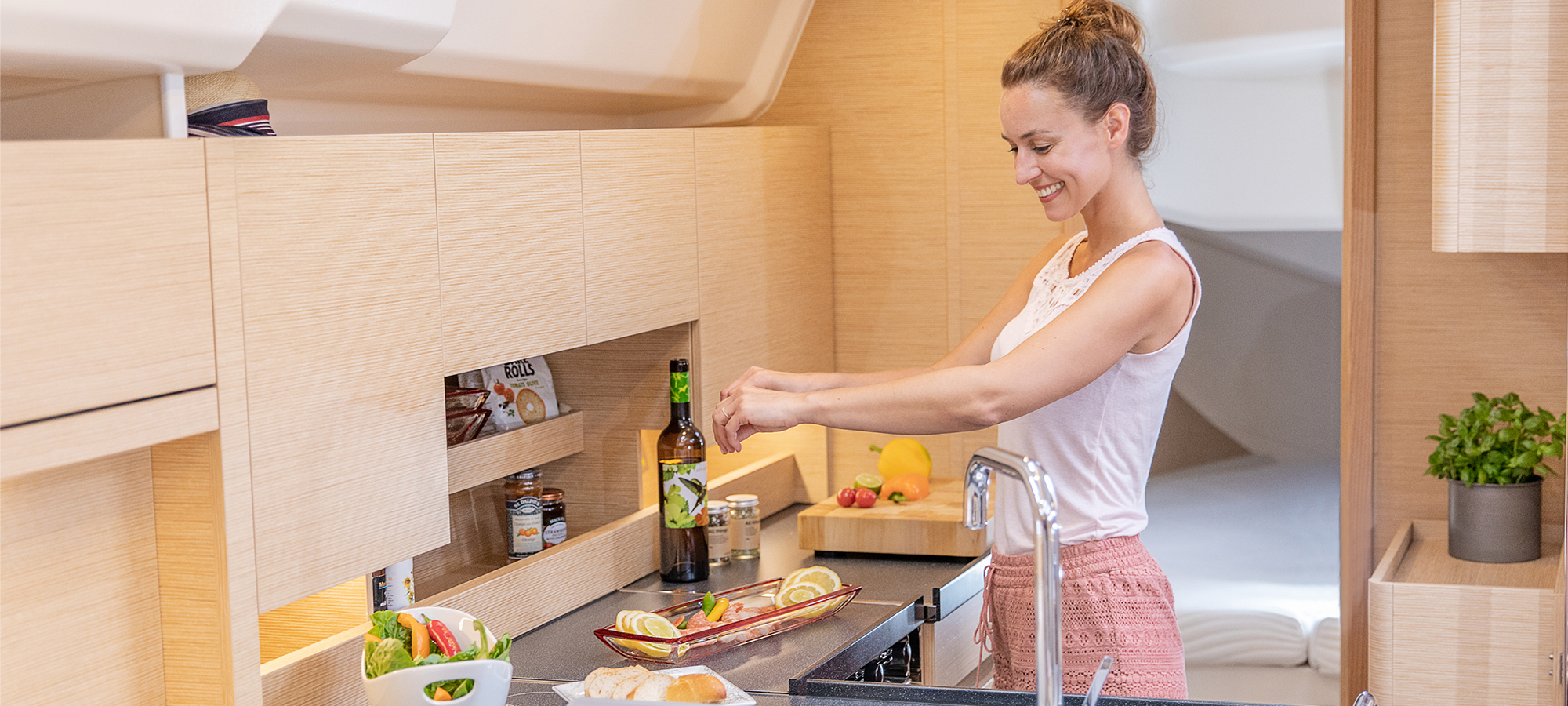Sailboat Cooking: Everything You Need to Know

Sailboat cooking is, well, not exactly the same as the more spacious kitchen you likely have at home. And with limited space and appliances at your disposal, you often have to get creative at sea with little available.
But it’s not the end of the world.
While sailboat cooking comes with its complications, it also essentially keeps your meals simpler - meaning less time at work and more time enjoying the stunning seascapes. That’s a win for everyone, right?
However, should your culinary prowess feel like shining at sea, we have some sailboat cooking tips to keep you at ease.

Kitchen staples for sailboat cooking
Before you begin shopping for a week or so away, it’s essential to know what exactly works on a sailboat. The first thing to remember is that fridges and freezers cannot be expected to keep your food items as chilled as you’re used to. That doesn’t mean you should steer clear of refrigerated foods, but less is more in this case, and essentials should be the rule.
One thing you can’t live without while sailboat cooking? Olive oil. Not only is it suitable for cooking, but its versatile use in salads and charcuterie boards make for foolproof sailing meals.
Non-perishables are always wise to keep on board, and canned items like beans can dress up any simple summer salad. Likewise, pasta is your most reliable friend at sea, with hundreds of single-pot recipes you can muster up from a few ingredients (we’ll go into that later). Think filling, facile, and fun!
Snacks, from crackers and nuts to cookies and dried fruits, ensure you’ll never go hungry; just make sure you stock up enough to nibble around.
For quick and easy lunch ideas, think hummus and veggie tortilla wraps or really any wrap sandwich, like cream cheese, cucumber, and onion or deli meat and cheese. And don’t forget to grab a few condiments along the way, like mayonnaise, mustard, and our favorite - ajvar!
Breakfast items like eggs, cereals, and milk are easy to store, and it’s a no-brainer that coffee is an absolute must.
And the liquid gold to crown every meal onboard? Wine. Whether you stock up before you sail or purchase bottles from quaint island wineries along the way, you only need to make sure it’s never too far out of sight.

Where to shop?
You’ll likely do the bulk of your shopping before you hop on the boat, and larger supermarkets like Spar, Tommy, Konzum, and Plodine are great to get you going. But what if that oh-so-necessary ingredient slipped your mind?
Don’t fret. Most marinas will have some sort of food shop for you to get what you need before you head off, and if you can’t find it there? Check out your sailing itinerary and ask your captain where he thinks it is best to do your next round of shopping. While some sailing destinations will be remote with isolated island stops, you’ll likely dock or anchor in a busier island town that will have at least 1-2 larger markets for you to find what you’re looking for.
But that’s not all.
Boat sellers
Croatian tourism has undoubtedly gotten more creative over the years, with intelligent locals learning how to capitalize on the markets that need it most. For example, should you need fresh produce or realize you’re out of bread when out at sea, it is not unusual to come across boat sellers circling the bay with local goods for purchase.
And if you’re on the island of Šolta and looking for something a bit… harder? Don’t be surprised when you see the mojito man prepping and slinging tropical and chilled mojitos for your imbibing pleasure!
Small kitchen tips for sailboat cooking
Will you be able to make stovetop espresso? Do you require sharper knives? Or what about that must-have peeler to keep the skins off your veggies?
First things first - if you plan to cook a bit on your sailing holiday, it’s important to know what your kitchen sailboat rental has available. Writing your charter company to see about any specifics you may need before setting sail is one way to make sure you’ve taken inventory, and if you can’t manage before you hit the high seas, have a look when you first get on the boat so you can hopefully source what you’re looking for at the next shop you see.
And remember - the saying ‘too many cooks in the kitchen’ has never reigned more true until you’ve been on a sailboat. But you don’t have to overdo it. Instead, try designating one person each night to do the cooking and cleaning! You’ll thank us later.

Go-to sailboat cooking recipe
When at sea, you’ll need some dependable recipes you know you can lean on.
A simple salad to start always does the trick, and Dalmatians are known for one of the simplest salads yet. Whatever produce you have at your disposal, usually lettuce, cucumbers, tomatoes, bell peppers, and onion - dressed with olive oil, red wine (or balsamic) vinegar, salt & pepper. And that’s your side dish done!
But what to eat with it? Why not try šalša, a traditional Dalmatian tomato sauce. All you really need are ripe tomatoes, olive oil, garlic, and some spices, though you could also add bell peppers to give the sauce more depth.
Here is how we like making it:
- Finely chop onion and garlic. Peel whole tomatoes and slice them.
- Heat olive oil in a cooking pot.
- Add onion first and cook until translucent, then add the garlic (make sure it doesn’t burn!)
- Add the peeled and sliced tomatoes to the pot.
- Stir occasionally.
- When the tomatoes have released their juice, add the seasoning (salt, pepper, spices if you desire). If the tomatoes are not fully ripe, you’ll likely need to add sugar, too.
- Finely chop parsley and basil (optional) and add to the tomato sauce.
*The key to this sauce is tasting it often to see what you need and add along the way, as any good Dalmatian chef would. You can easily adapt this to your sweet or spicy tastes!
Once the sauce reaches the flavor and thickness you like, top it over the pasta of your choice, sprinkle a little parmesan and add a fresh basil leaf, and you’ve got yourself one delicious Dalmatian meal.

Share your holiday details with your holiday expert and they will call you and help you with any topic you need help with.
Average response time: 30 min.
















